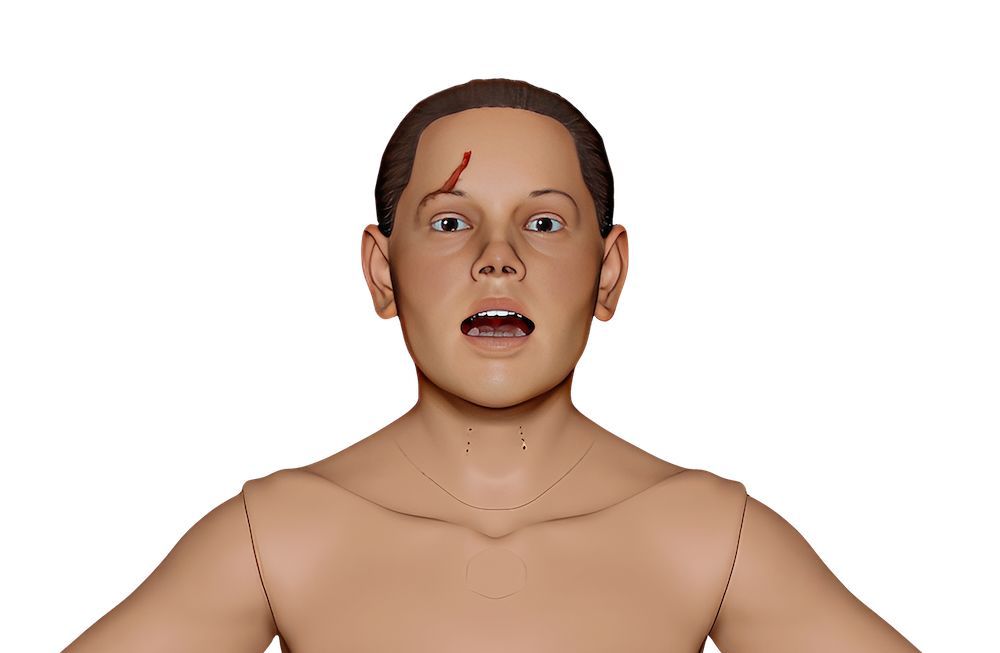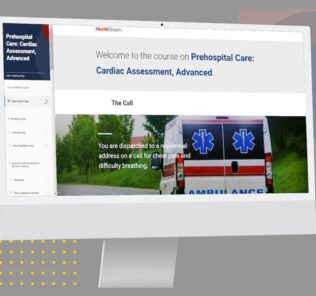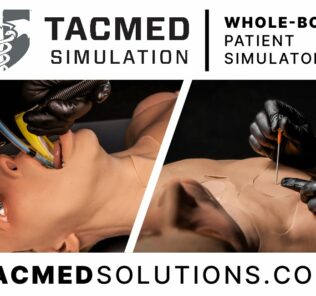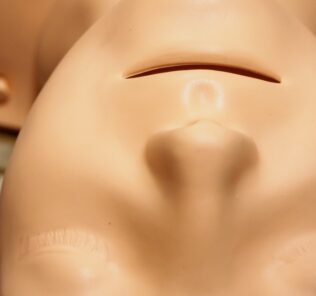Bridging the EMS System Trauma Simulation Gap with Culture Over Technology
Tactical Medical Solutions (TacMed) is bridging the gap in the Emergency Medical Services (EMS) system trauma simulation gap with their newest manikin, MATTi. MATTi is a paradigm shift in the medical simulation industry with the launch of a new female healthcare simulation trauma manikin. MATTI has been specifically developed for trauma but can be de-traumatized to be used in nontraumatic clinical settings. Trauma is the fourth leading cause of death in the US for all ages. This HealthySimulation.com article written by Dan Irizarry, MD, will discuss how the EMS system’s trauma simulation gap relates to culture, not technology. Don’t forget to visit TacMed Solutions at booth #725 at IMSH 2024!
Emergency Management Services and Trauma
Trauma makes up 21.4% of EMS calls. By comparison, the National Emergency Medical Services Information Systems (NEMSIS) database shows the frequency of calls for chest pain, cardiac rhythm disturbance, and cardiac arrest, as 10.1%, 1.9%, and 1.8% respectively. Though trauma is far more common, many EMS training sites are overflowing with high fidelity ALS manikins barely utilized and using low fidelity, unrealistic dummies for trauma training. Very few EMS training sites have sought outside simulation accreditation and EMS training sites and systems often lack programmatic funding for simulation-based training. These are not failures of technology but of training culture.
Sponsored Content:
Since modern medical simulation began in the 1960’s, healthcare educators prioritized CPR and heart arrhythmia simulation to support basic and advanced life support curriculums. In 2010, the Global War on Terrorism sparked development of today’s high fidelity trauma simulators, human and canine, capable of breathing, bleeding and physiologically responding to treatment. Their realism, durability, and ability to objectively measure student performance create standardized training and testing platforms for Advanced Trauma Life Support and Pre-Hospital Trauma Life Support curriculums.
View the LEARN CE/CME Platform Webinar What is the Right Manikin Fidelity for Us? to learn more!
They align with the Committee on Accreditation of Educational Programs for the Emergency Medical Services Professions (CoAEMSP) and NREMT Simulation Guidelines and Recommendations stating that “Motor skills that are initially best learned and assessed on task trainers should then be assessed in the context of high-fidelity simulation, especially when used in lieu of live encounters.” Yet, most EMS medical educators are either not aware of today’s trauma simulation technologies or unable to procure them.
Evaluating Culture Versus Technology
Sponsored Content:
A literature review reveals several barriers to implementing clinical simulation in EMS training. While published in 2015, McKenna et al.’s “Simulation Use in Paramedic Education Research (SUPER): A Descriptive Study,” is still instructive. Although all 389 respondents had access to full spectrum simulation tools, lack of training was the most common reason simulation was not used. Other common barriers include cost, poor curriculum integration, and clinical clerkship time requirements. These are all a direct or indirect reflection of the culture and commitment to simulation and its role in the EMS education process.
The nursing education community is probably the best example of an adoptive simulation culture second only to the aviation community. In both paradigms, the culture accepted simulation and created support systems, simulation training, procurement, curriculum integration and use guidelines to successfully use simulation to its maximal effect. In 2023, the Florida Legislature allocated $79M to the improvement of nursing education specifically identifying funds to “support simulation centers to advance high-quality nursing education programs throughout Florida.”
The technology that supports simulation is a critical piece of shifting culture. In the case of aviation, FAA regulation has greatly aided the development of technologies to create quality simulation experiences and drove industry standards. Technology that is complicated to use, limited in application, and breaks easily negatively affects simulation culture. Believability is another important element of positive simulation experiences and sours or enhances the simulation culture at a training event. Adding lipstick to a pig by attempting to augment trauma capability to a low fidelity or high-fidelity ALS manikin that has already outlived its lifespan may be financially cost effective but should be a stop gap measure not the long-term plan if you truly want to create a flourishing clinical simulation culture. When EMS educators develop a long-term simulation strategy for their programs, culture will grow as well.
TacMed Solutions – MATTi Female Trauma Simulator
TacMed Solutions’ Modular Advanced Treatment Trainer (i), MATTI, is a newly-launched technology designed to support and grow with the next generation EMS simulation culture. It is realistic, reliable, and durable and equally spans ACLS and trauma training outside and inside the hospital. Its modular design reduces lifetime costs and increases curriculum support flexibility giving the educator more training options. It meets an important gender disparity gap by representing the female form.
Upgraded controller systems make it easier than ever to use, meaning less training requirement and more simulation time, a documented barrier to simulation integration. MATTi was designed to support a simulation culture that embraces objective performance measurement and right fidelity to support learning objectives, where the student gathers all the critical patient information from the manikin not the instructor. While simulation culture is not just about technology, good technology matters.
EMS simulation’s future squarely rests in the simulation culture EMS educators establish. An innovative mindset that fosters systematic planning, investment and growth will create a fertile simulation enhanced learning environment likely to be better suited to today’s tech savvy EMS learner. Accepting the status quo will have the opposite effect. TacMed Solutions is here to support an invigorating EMS simulation culture designed to prepare the lifeblood of the EMS system, the healthcare provider. Come see MATTI, the future of EMS simulation, at the TacMed booth at IMSH this January in San Diego, CA.
More About TacMed Solution
Tactical Medical Solutions explains that products are not designed to pass a structured laboratory test in a controlled environment or barely meet a requirement as a substitute. Rather, they are designed to function when there is no structure when users have minimal supplies and very little time. This also applies to situations when there is no one else there to help, and users may have more than one casualty – while they are trying to save lives and while someone is trying to take theirs. That is the environment of the tactical healthcare provider and that is where TacMed products excel. Don’t forget to visit TacMed Solutions at booth #725 at IMSH 2024!
Learn More About TacMed Solutions MATTi Female Simulator!
References:
- The American Association for the Surgery of Trauma, “Trauma Facts“
- CoAEMSP and NREMT Simulation Guidelines and Recommendations
- UnitekEMT “16 Most Common EMS Emergencies for EMTs & Paramedics“
- Advanced Emergency Medical Technician Student Minimum Competency Model Guideline
- Governor Ron DeSantis Announces $79 Million for Nursing Education and Health Care Partnerships
Dr. Dan Irizarry, MD, is Tactical Medical Solutions Senior Medical Advisor. Retiring in 2018, “Dr. Dan” served 26 years in the US Army supporting medical and special operation force (SOF) organizations. Serving as the NATO SOF medical advisor, he designed and launched NATO’s first combat medical simulation center to train SOF medical personnel. In his final military assignment, he helped launch the DoD’s medical simulation acquisition and advanced development office in Orlando, FL.
Today, he helps guide TacMed’s research and development efforts to ensure medical and simulation products meet the highest clinical standards. He continues to practice family medicine as the medical director for Kanan Medical, Inc., overseeing the healthcare delivery to over 30K patients through 5 clinics in Central Florida.
Sponsored Content:


















